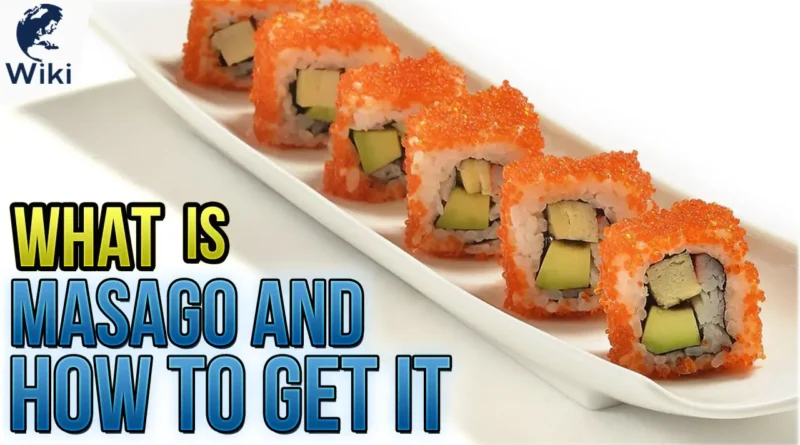Masago: The Tiny Eggs That Pack a Big Punch
Masago: The Tiny Eggs That Pack a Big Punch
Introduction
If you’ve ever indulged in sushi, you may have encountered small, bright orange or yellowish beads adding texture and flavor to your meal. These tiny, crunchy pearls are called masago, and they are the roe (eggs) of a fish known as the capelin, a type of smelt fish found primarily in the cold waters of the North Atlantic and Pacific oceans. Masago is often used as a garnish or an ingredient in various Japanese dishes, particularly sushi and sashimi. Though modest in size, these eggs bring an array of flavors and a unique texture that make them a favorite among seafood lovers. But masago is more than just a garnish; it’s a nutrient-dense food that offers a range of health benefits. In this article, we’ll dive into everything you need to know about masago, from its origins to its culinary uses, nutritional content, and sustainability concerns.
The Origins of Masago
Masago comes from the capelin fish (Mallotus villosus), a small forage fish found in cold northern waters, particularly around Iceland, Greenland, and Norway. The fish is a staple in the diets of many larger fish, including cod, seals, and seabirds, which means it plays a crucial role in marine ecosystems. During spawning seasons, capelin swim close to the shorelines to lay eggs, making them an accessible catch for fishermen.
Despite their differences, masago has gained popularity because of its affordability compared to tobiko, while still offering a burst of flavor and aesthetic appeal to various dishes.
How Masago Is Harvested
The process of harvesting masago begins with catching female capelin during their spawning season.The eggs are typically tiny, about 1 millimeter in diameter, and are naturally a pale yellowish color.
While traditional masago has a mild, salty flavor, modern variations can come in spicy or citrus-infused options, expanding its versatility in the culinary world.
The Unique Flavor and Texture of Masago
The eggs are tiny and crisp, bursting slightly when bitten into, which adds a pleasant contrast to the softness of sushi rice or the smoothness of raw fish.This makes it an ideal topping for dishes, as it enhances the flavors of the main ingredients without overpowering them.
Chefs also use it in sauces, where its tiny size and burst of texture can add complexity to dressings, dips, and spreads.
Culinary Uses of Masago
Masago’s versatility is one of the reasons it has become such a popular ingredient in Japanese cuisine and beyond.
- Sushi and Sashimi: One of the most recognizable uses of masago is as a topping for sushi rolls. It adds a bright pop of color and a subtle crunch that complements raw fish and vegetables.
- Gunkan Maki: This simple preparation allows the flavor of the masago to shine while giving diners the opportunity to enjoy the eggs in their purest form.
- Sauces and Dips: Masago is also used in fusion dishes, where it is mixed into sauces and spreads. For example, masago can be blended into a creamy mayonnaise-based sauce, adding a slightly salty, oceanic flavor to dips for tempura or grilled seafood. Some chefs even incorporate masago into pasta dishes for an unexpected twist, as the eggs add a subtle briny taste and pop of texture.
- Salads: It pairs well with leafy greens, cucumbers, and citrus-based dressings.
- Sushi Bowls and Poke: Beyond sushi rolls, masago is a popular addition to poke bowls and sushi rice bowls. It adds a layer of complexity to these bowls filled with raw fish, vegetables, and various toppings. Its salty, slightly sweet flavor helps to round out the dish, especially when combined with other ingredients like soy sauce and sesame seeds.
Nutritional Value of Masago
Though tiny, masago is surprisingly nutrient-rich.A 1-ounce (28-gram) serving of masago provides:
- Calories: 40
- Protein: 4 grams
- Fat: 2 grams
- Omega-3 fatty acids: 1 gram
- Sodium: 600 milligrams
- Vitamins: Contains Vitamin B12, B6, and D
- Minerals: High in selenium and magnesium
It also contains antioxidants like selenium, which helps protect cells from oxidative damage. Additionally, the Vitamin B12 found in masago supports brain health and energy production.
Sustainability Concerns
While masago is a nutritious and flavorful ingredient, there are growing concerns regarding the sustainability of harvesting capelin roe. As capelin are an important part of the food chain in marine ecosystems, overfishing can have cascading effects, impacting not only capelin populations but also the predators that rely on them, such as cod and seabirds.
Several organizations are working to improve the sustainability of masago production by implementing stricter fishing quotas and encouraging fisheries to adopt more responsible harvesting methods. As a consumer, looking for certifications like the Marine Stewardship Council (MSC) label can help ensure that the masago you’re purchasing comes from a sustainably managed fishery.
Conclusion
Masago may be small, but it offers big flavor, texture, and nutritional benefits. Whether you’re enjoying it on sushi, in a salad, or blended into a sauce, masago is a versatile ingredient that can enhance a wide variety of dishes. However, with increasing awareness of overfishing and sustainability issues, it’s important to be mindful of where your masago comes from to ensure you’re making an environmentally responsible choice. As more sustainable options become available, there’s no reason not to enjoy this delightful ingredient while supporting the health of our oceans.
